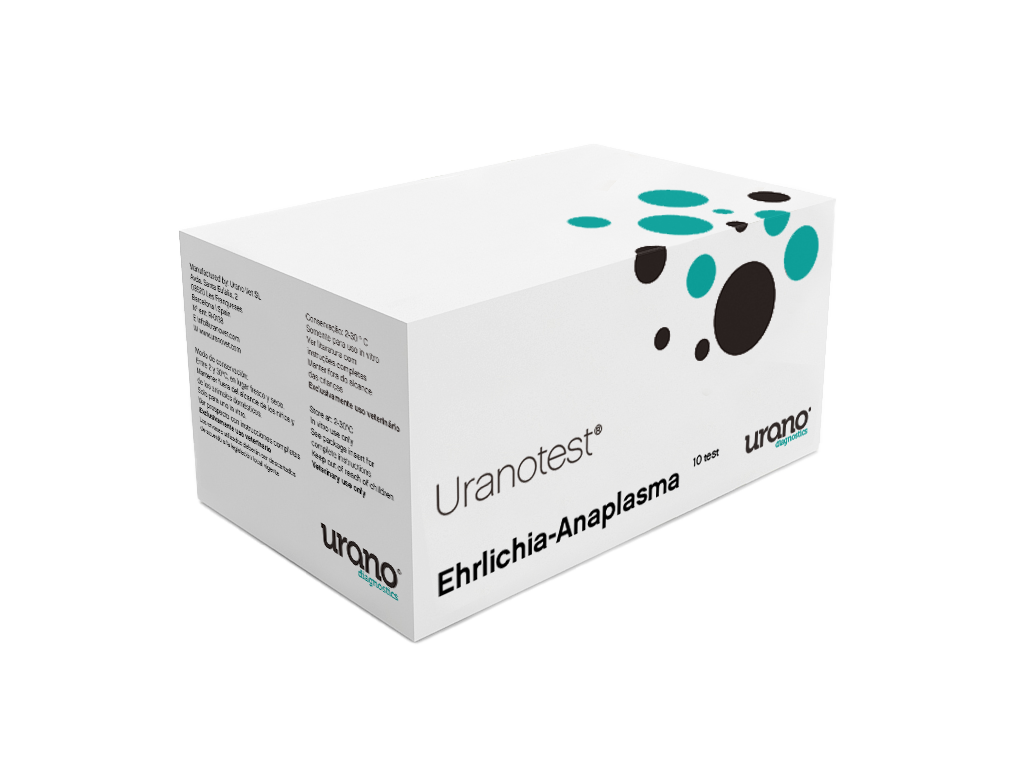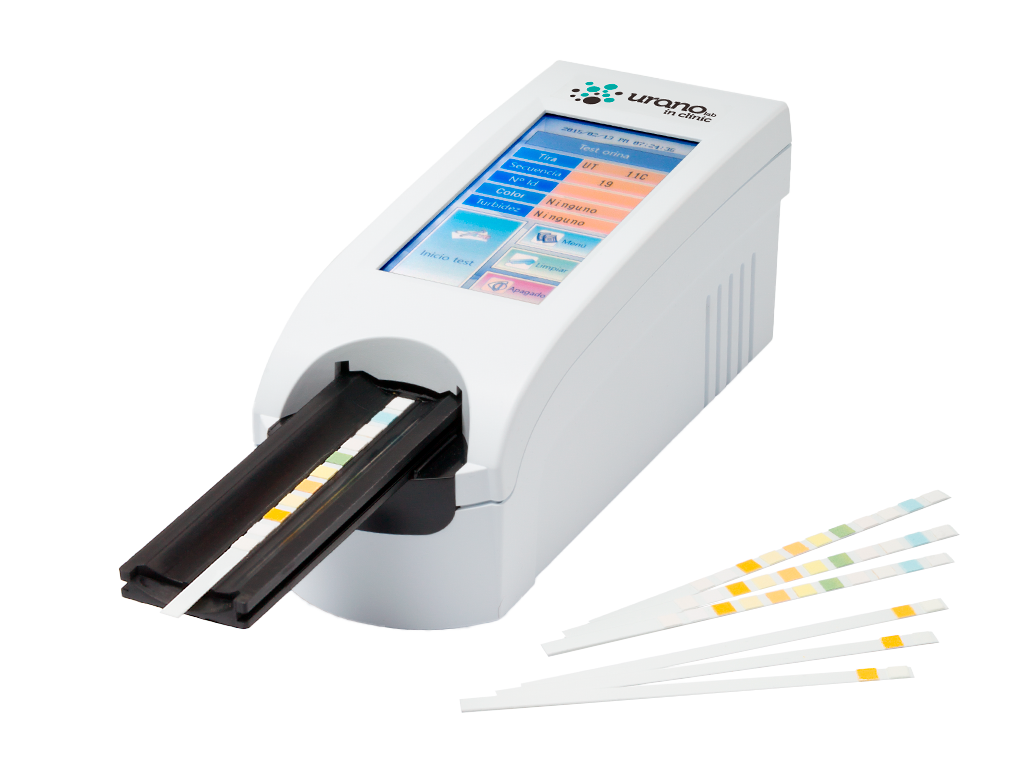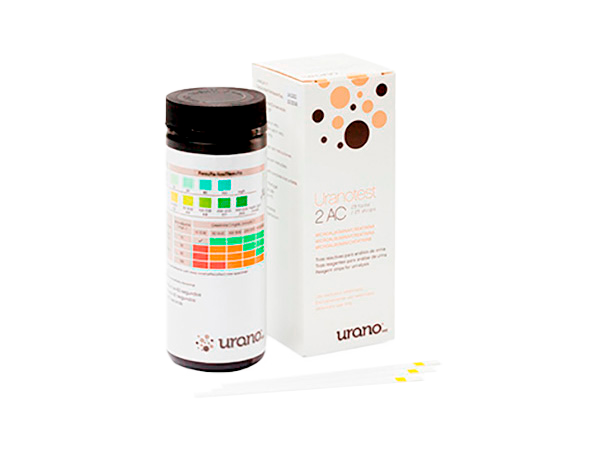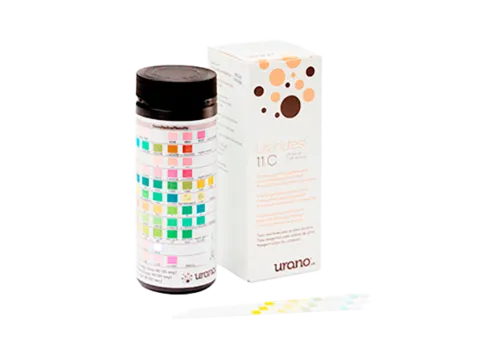
Diagnostic tests
Uranotest® 11C
Semi-quantitative detection of urobilinogen, glucose, ketone bodies, specific gravity, blood, pH, nitrites, leukocytes, protein and creatinine.
Specs
- Purpose
Semi-quantitative detection of urobilinogen, glucose, ketone bodies, density, blood, pH, nitrites, leukocytes, PROTEIN, CREATININE
- Sample
Urine
- Reading time
- 60-120 seconds
- Visual reading or automatic reading with URANOTEST READER
- Execution time
Less than a minute
- Format
Tube with 25 strips
- Registration Nº
3290 SCPF
Characteristics
- Calculates the PROTEIN/CREATININE ratio, indispensable in evaluating kidney damage and its later monitoring.
- Unlike strips that only detect proteinuria, the possibility of establishing the protein/creatinine ratio is not influenced by the urine volume or concentration. For this reason, the protein/creatinine ratio is much more precise for evaluating proteinuria in low-density urine samples.
- Furthermore, the protein/creatinine ratio corrects creatinine deviation due to extra-renal causes.
Information for the veterinarian
The procedure must be followed exactly to achieve reliable results.
- Dip the strip into the urine up to the test area for no more than two seconds.
- Draw the edge of the strip along the brim of the vessel to remove excess urine; at this time, do not make the test areas touched to the brim of the vessel.
- Turn the strip on its side and tap once on a piece of absorbent material to remove any remaining urine. Excessive urine on the strip may cause the interaction of chemicals between adjacent reagent pads.
- Read the results:
- If reading visually: Compare the colours of the reagent pads exactly after 60 seconds with the colour chart on the vial label under good light. While comparing, keep the strip horizontally to prevent possible mixing of chemicals when excessive urine is present.
- If using the URANOTEST READER, carefully follow the directions given in the instrument-operating manual. The instrument will automatically read each test pad result at a specified time.
- Use of refrigerated urine sample without tempering.
- Use of non-recent urine (it is preferable to perform the urinalysis within 30 minutes after collection to avoid contamination, pH changes and compound degradation).
- Use of expired strips, or strips exposed to air due to poor storage.
- Reading the strips at a time other than recommended.
- Reading the strips in vertical position (this does not occur with automatic reading with the aid of the reader).
- Contamination of the sample with disinfectants.
- Prolonged immersion of the strips in urine (may cause alteration of the colorimetric reaction) or non-elimination of excess urine with the aid of an absorbent material.
- Touching the reactive zone on the strips with fingers (colours may be altered).
- Very pigmented or turbid urine (prior centrifugation is recommended).
- lnadequate light or visual difficulty for observer (this does not occur with that automatic reading with the aid of the reader).
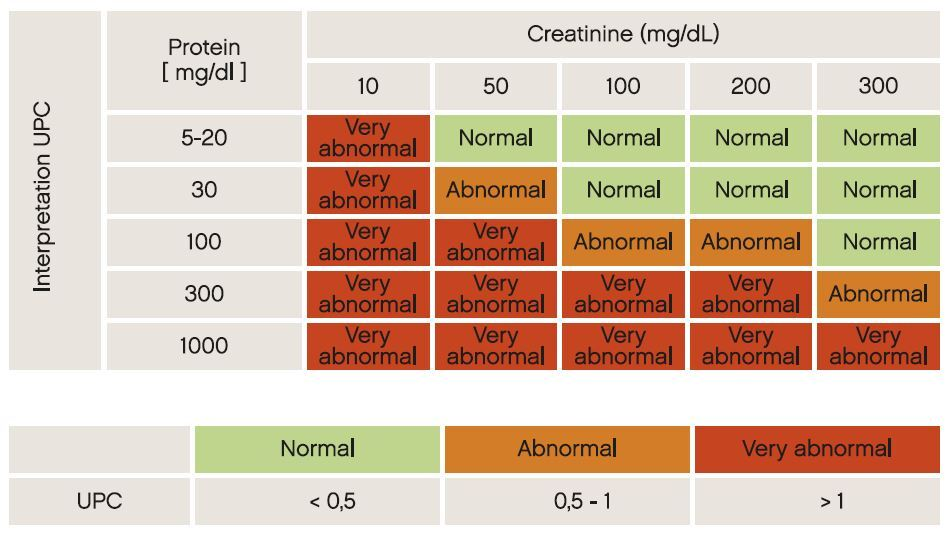
| Normal | Anormal | |
|---|---|---|
| Colour | Yellow or amber | Very dark yellow: concentrated, bilirubinous urine. |
| Red, dun, brown: haematuria, haemoglobin, myoglobinuria. | ||
| Greenish: bilirubinous | ||
| Milky white: puss, phosphate crystals | ||
| Transparency | Clear | Turbid due to semen, bacteria, lipids, mucous, faecal contamina-tion, crystals, red blood cells, white blood cells, epithelial cells |
| Odour | Soft odour that may be very intense with sorne species (adult male cat urine has a characteristic odour) | Ammonia odour due to action of positive urease bacteria hydrolysing the urea |
| Volume | Dog: 25-30 ml/kg/day Cat: 18-25 ml/kg/day |
Oliguria Anuria |

Uranotest® 11C

